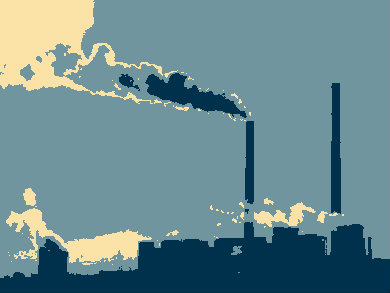Developments in hydraulic fracturing (fracking) have substantially increased the supply of natural gas in the US. This led to a change in the fuel mix used for electricity production, away from coal and towards gas. These changes have coincided with a decrease of US carbon emissions by around 11 % between 2007 and 2013. But is there a causal link?
Klaus Hubacek, University of Maryland, College Park, USA, and colleagues have analyzed influences on US CO2 emissions between 1997 and 2013, including population growth, per capita consumption, changes in fuel mix, and the energy efficiency of production. The team focused on the power sector.
The researchers explain the steadily growing emissions from 1997 to 2007 mainly by an increase in consumption and population growth. The sharp decline in the following years did coincide with the fracking boom, but according to the study, just 17 % of the changes can be attributed to changes in the fuel mix, including the increased use of natural gas. The other 83 % were caused by the global economic recession, resulting in decreased consumption. During the economic recovery, US carbon emissions decreased by less than 1 %, confirming the study’s interpretation.
These results should urge policy makers not to depend on natural gas as a means of reducing CO2 emissions, but focus on lowering consumption and increasing the share of carbon neutral energy sources.
- Drivers of the US CO2 emissions 1997–2013,
Kuishuang Feng, Steven J. Davis, Laixiang Sun, Klaus Hubacek,
Nature Commun. 2015, 6, 7714.
DOI: 10.1038/ncomms8714
Also of Interest
- What is Shale Gas? How Does Fracking Work?,
Vera Köster,
ChemistryViews 2013.
How does hydraulic fracturing (fracking) and horizontal drilling make natural gas trapped in shale rock formations financially feasible and accessible?




